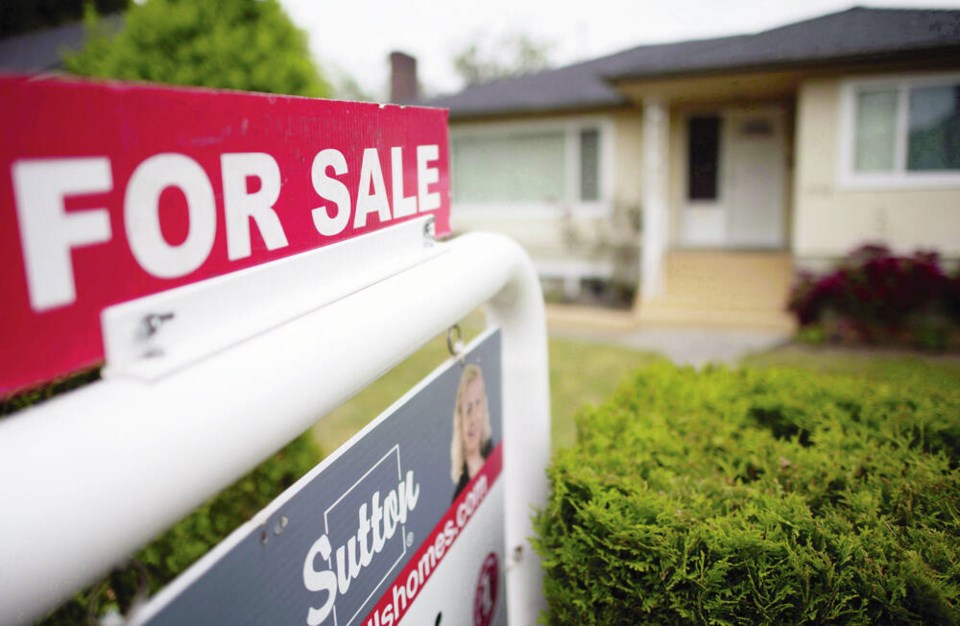Rising mortgage rates are already having a cooling effect on the province’s real estate market, according to figures released Monday by the B.C. Real Estate Association.
Total sales dropped by 35 per cent in May versus the same time last year, with 8,214 properties changing hands last month, the association said.
The value of sales through the first five months of the year dropped by 14.5 per cent to $46.7 billion, versus the same time period in 2021. Over that five-month stretch, home sales dropped by 26.3 per cent to 43,921 units.
And the trend is expected to continue, said B.C. Real Estate Association chief economist Brendon Ogmundson, with sales declining over the next six months as markets adjust to a “dramatically different” interest-rate environment.
At the same time, the inventory of listings will accumulate, though it still may be eight to 12 months before B.C. listings are at a “healthy” level, he said.
Ogmundson noted the average five-year fixed mortgage rate reached 4.49 per cent in June, the highest since 2009.
While the association expected the five-year fixed rate to rise to that level, it anticipated it would happen over the course of 12 to 18 months, he said. “Instead, it happened in six months. That means sales are falling faster than expected in a number of markets, particularly those markets that seem to be more interest-rate sensitive.”
The Bank of Canada started raising its benchmark lending rate — which directly influences the rate consumers get on lines of credit and mortgages — in March. Since then, it has increased from 0.25 per cent to 1.5 per cent.
The effect on home sales has been immediate.
In Victoria, there were 761 home sales in May, a 27.5 per cent drop from May last year, despite the fact there was a 30 per cent increase in available housing inventory, with 1,776 listings in the region at the end of the month.
While Ogmundson attributed slowing sales mostly to rising mortgage rates, he said a general fatigue in the market has also set in.
“A lot of the pandemic-driven out-migration has likely slowed, as it has become much more difficult to find and afford homes in places like the Island and the Okanagan, than in 2020,” he said.
Selling prices of homes in markets like Victoria remain high, and Ogmundson said that could continue for a while.
While some areas of the Lower Mainland have seen 10 per cent declines in average prices, that’s more about the changing composition of sales than an underlying weakness in the market, he said.
“The Island markets were the most supply-constrained in the province and so it will take some time for prices to adjust. While price growth is decelerating on the Island, month-over-month prices were still rising at a five to seven per cent rate in May.”
The average sale price in the province last month was $1 million, a 9.3 per cent increase from the $915,392 recorded in May 2021.
In Greater Victoria, the benchmark price of a single-family home was $1.29 million, up from $1.02 million at the same time last year, and $1.27 million in April this year.



